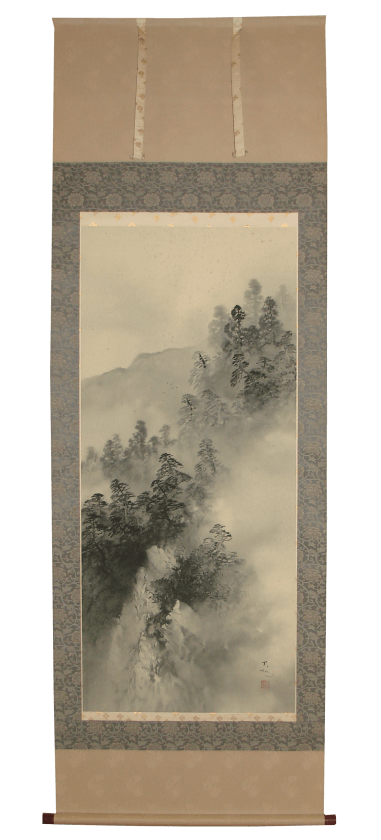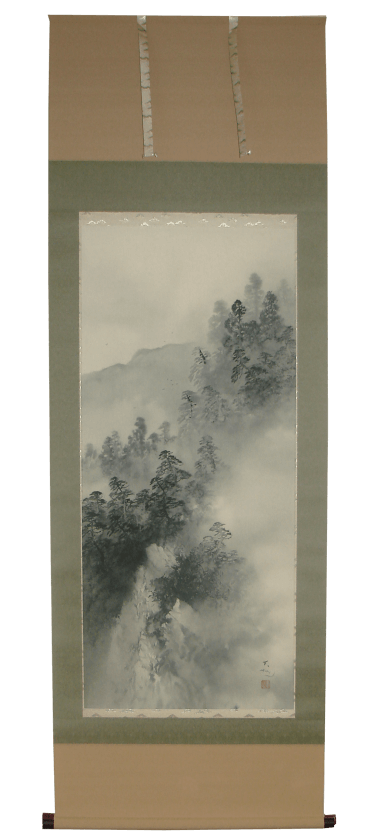Restoration Antique Japanese Kakejiku Scroll: Stain Removal
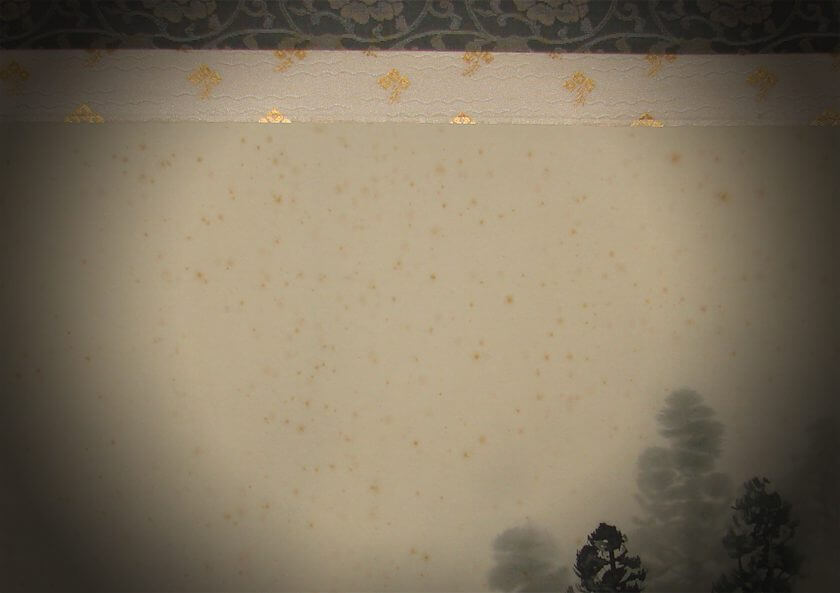
An antique kakejiku is charming but quite a fragile one. In various environments, kakejiku is damaged by various causes such as animal or vegetable oils, dust over time, the accumulation of tobacco smoke and incense soot, mold, mud, rust, pigments, sumi ink and so on. Dirt/stain is usually made up of multiple components as stated above. Some are easy to remove, some are difficult but not impossible to remove.
According to circumstances, we choose the best way to remove dirt. We simply call the process “cleaning”.
Sometimes, stubborn dirt stains cannot be removed by cleaning. In this case, we need to take this one step further, which is to use good old-fashioned bleach. The act is like bleaching stained clothes, but we must be more cautious as the art is delicate and making the wrong move can cause even more damage than dirt and stains. Bleach should always be diluted with the right amount of water first before use by a mounter. Still, it is very difficult to judge dilution rate even for a seasoned mounter. We hear that many other mounters decline a client’s request for stain removal using bleach due to the laborious process. ART NOMURA does best to meet client needs as much as possible because we care.
We are going to talk about how we treated an antique stained kakejiku.
Stain Removal from Painting
One look at the kakejiku, we knew they are a kind of stains that would not be pushed to the surface just by cleaning. Spots are spread all over the painting like chickenpox.
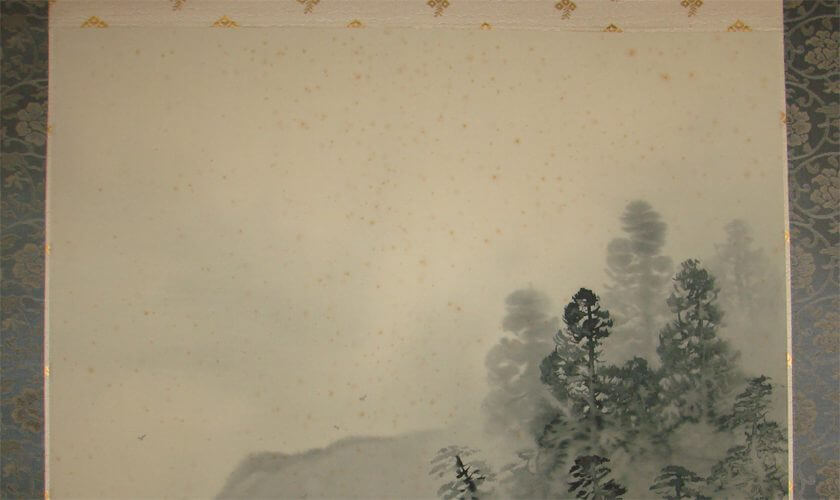
Due to many spots, birds looks like they are hiding in plain sight.
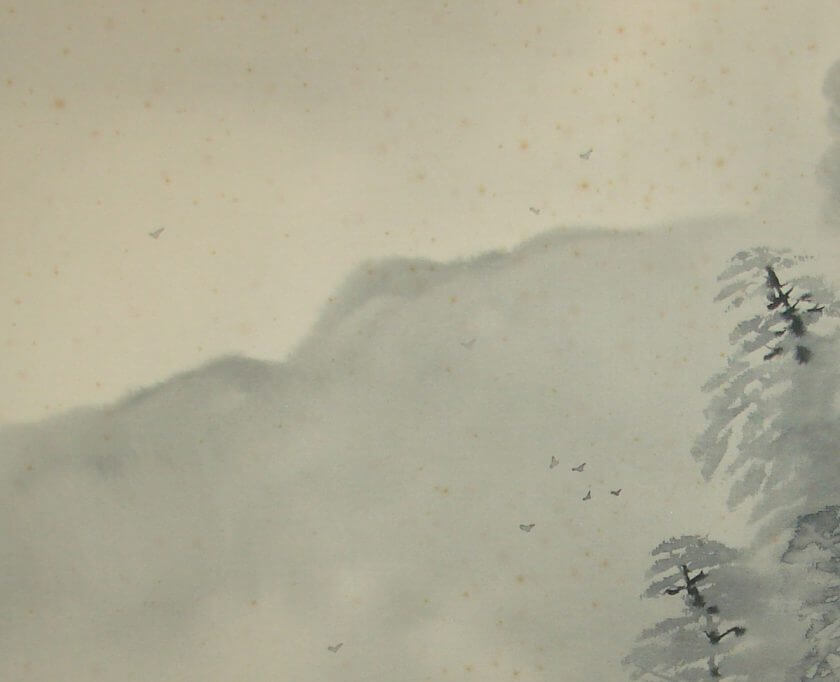
Also, the spots are on the fog too. Fog created out of blank space adds the atmosphere to the painting, but the spots are ruining it.
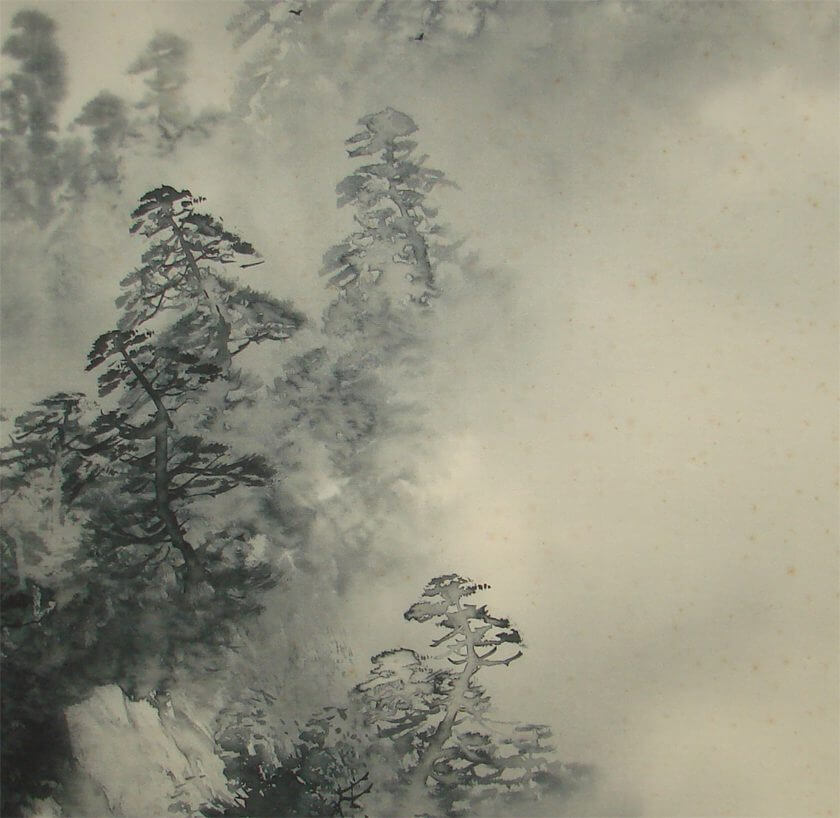
Restoration (Remounting) Process
Outline of the restoration process will be as follows:
01. Selection of the mounting fabric
02. Disassembly
03. Removal of the old backing paper
04. Cleaning
05. Removing stains
06. Mounting
If you want to know more about the restoration process, please refer to the below video.
Restored Landscape Painting Kakejiku
The painting itself was sturdy enough so we were not so afraid of bleaching the spots.
Countless spots were completely removed.
Birds became more apparent because the spots were gone.
Spots that were covering the fog area are gone and now we can sense that the surrounding atmosphere envelops the landscape. The feeling of depth is back again.
This kakejiku depicts a dense fog laid around a precipitous cliff where trees grow lively in these tough environments. The processes of cleaning and bleach did the trick wonderfully to restore the beauty of the landscape.
The longer a stain sits, the tougher it is to remove. If you have an antique kakejiku that needs cleaning, you may want to place it in the hands of a professional. Restoration will make a kakejiku like brand new again (not ruining the good old taste) and can be enjoyed for many years to come.
For restoring an antique kakejiku hanging scroll, please feel free to contact us.

